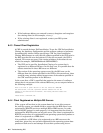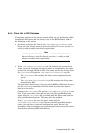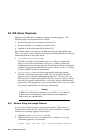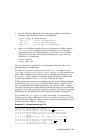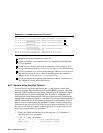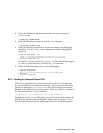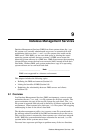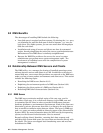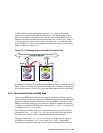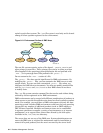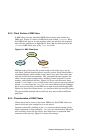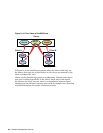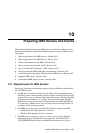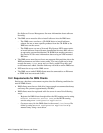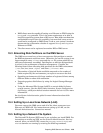9.2 DMS Benefits
The advantages of installing DMS include the following:
• Less disk space is required on client systems. By sharing the /usr area,
you eliminate the need for disk space to hold a separate /usr area for
each client. For Alpha systems, you can save more than 425 megabytes
(Mb) for each client.
• Installation and setup of servers and clients are done by automated
scripts, thereby simplifying the task of the server system administrator.
Maintenance of the DMS areas is similarly straightforward.
• Because the DMS files reside on the server, the server’s system
administrator can perform most system management tasks. The
involvement of individual users with the complexities of system
management is reduced.
9.3 Relationship Between DMS Servers and Clients
The DMS utility, dmu, manages the sharing of installed operating system
software between servers and clients in a LAN. In addition to the server’s
normal disk area, one or more disk partitions are reserved as the DMS area,
made up of one or more product environments and client areas. This section
includes the following topics:
• Describing the DMS server (Section 9.3.1)
• Explaining the environment portion of a DMS area (Section 9.3.2)
• Explaining the client portion of a DMS area (Section 9.3.3)
• Describing DMS client characteristics (Section 9.3.4)
9.3.1 DMS Server
The DMS server maintains multiple copies of the root area, one for
each client. Each copy is in a client root directory in the DMS area and
is customized for the client in order to provide for differences between
hardware platforms or environmental requirements. Each of the client root
directories is private; this means that there is a directory for each client so
that no conflict or confusion exists between clients. The server’s DMS root
and /usr areas are made available to clients by means of the Network File
System (NFS). For more information about the NFS used by the operating
system, see the Network Administration: Services manual.
Beyond verifying clients’ identities, vectoring their boot requests, and
providing their system disk space, the server does not interact directly with
the clients. The server can support local timesharing users and need not
be dedicated to DMS.
9–2 Dataless Management Services



